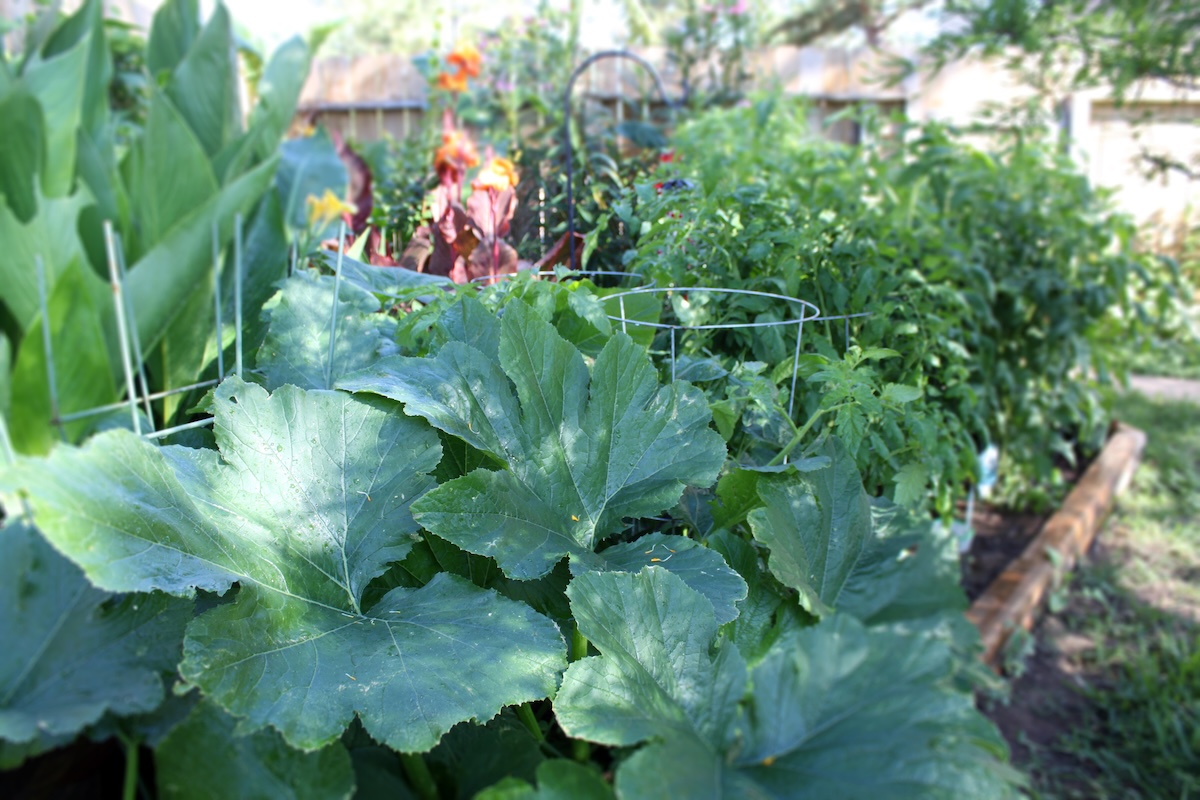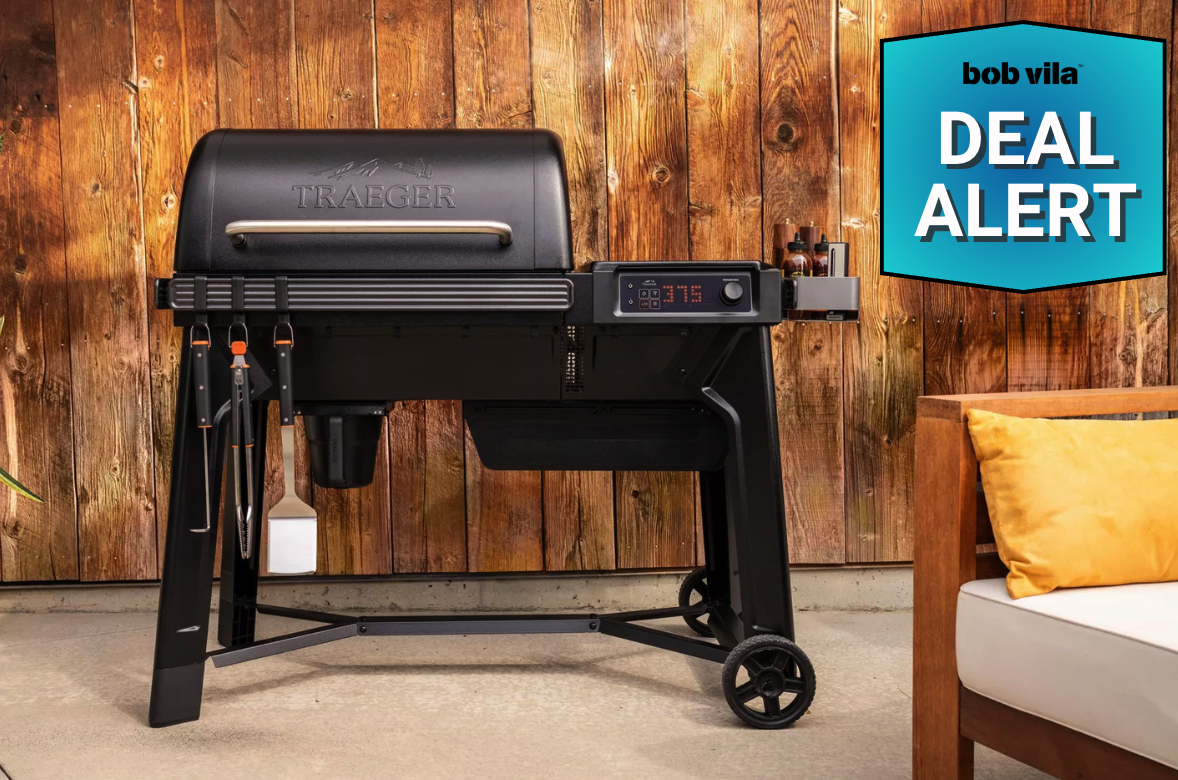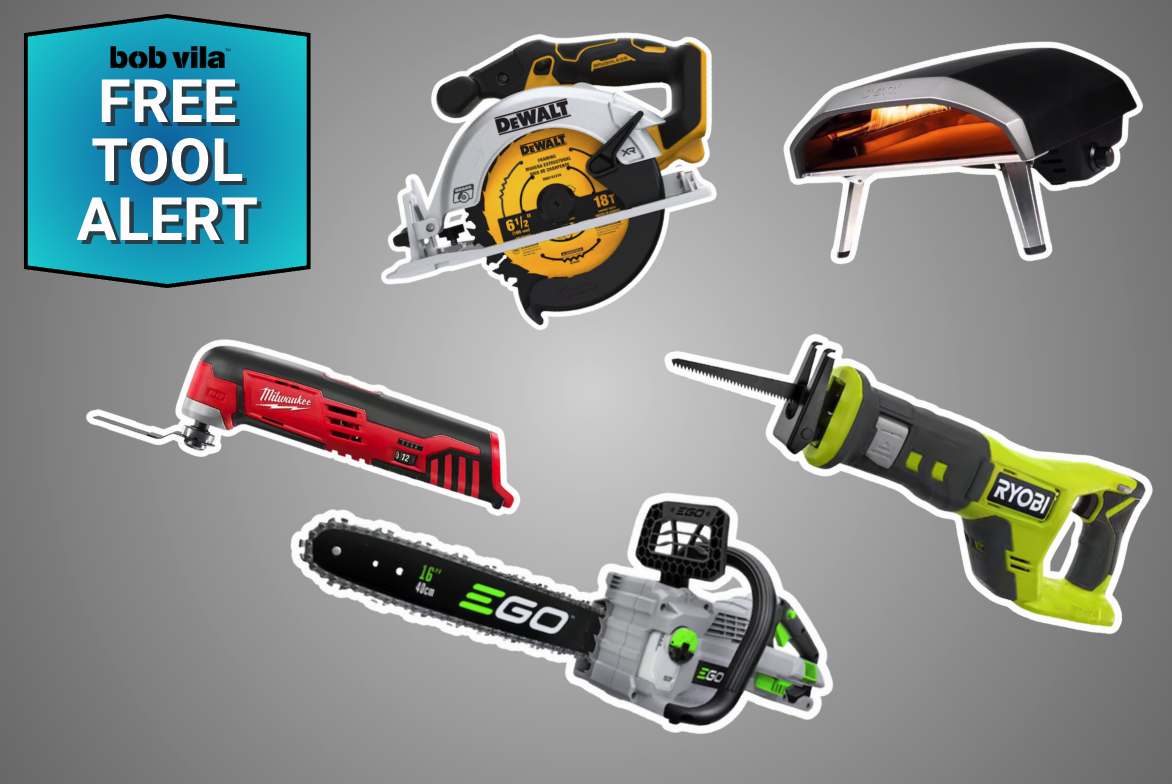We may earn revenue from the products available on this page and participate in affiliate programs. Learn More ›
After several years of amending the soil in our 5-year-old raised bed garden, this year’s early success had me excited—and maybe a little cocky. A few early rains boosted growth, but several out-of-town trips kept me away, and before I knew it, my tomato plants in particular were growing out of control. I also had left the beds too crowded by failing to thin seeds or train plants as I should.
The thrill of successful germination and growth of seedlings can make necessary pruning or thinning seedlings seem almost painful. Still, I know that controlling plant growth and crowding can result in healthier gardens and even help me produce more and better quality vegetables and herbs. I’m sharing the lessons I learned when summer seemed to speed by and leave my garden slightly neglected.
Why is overcrowding an issue?
A newly planted garden bed can look bare, but all annual vegetables grow quickly, completing the cycle from seed or transplant to flowering and producing fruit in one garden season. So, the bare soil you see when planting will disappear quickly. As with any garden plant, it’s best to space vegetables with their mature size in mind.
Of course, you can’t control unexpected rainfall or above-record heat, but you can keep plants in the healthiest state possible so they endure those events. When I failed to thin the seedlings enough and missed some plant pruning tasks, my garden got too crowded, and aside from the chaotic appearance, signs of plant problems began to show up during a late and long heat wave. My overcrowded plants were not in the healthiest state to endure more weather extremes. Overcrowded gardens also encourage insects and disease. I’ve never had much of a squash bug problem, but they had lots of places to hide this year and took advantage of the mess.
Though you can plant a little more closely in a raised garden bed than you might in garden rows, you want to avoid mature plants overlapping and blocking sunlight to other plants. You’ll also need to replenish spent nutrients as necessary with slow-release boosters like compost tea or fish emulsion, another task I neglected as the season wore on. To get more yield out of a raised bed or other small vegetable garden without overcrowding, you can turn to intensive gardening techniques like succession planting; most of all, avoid overcrowding your garden.
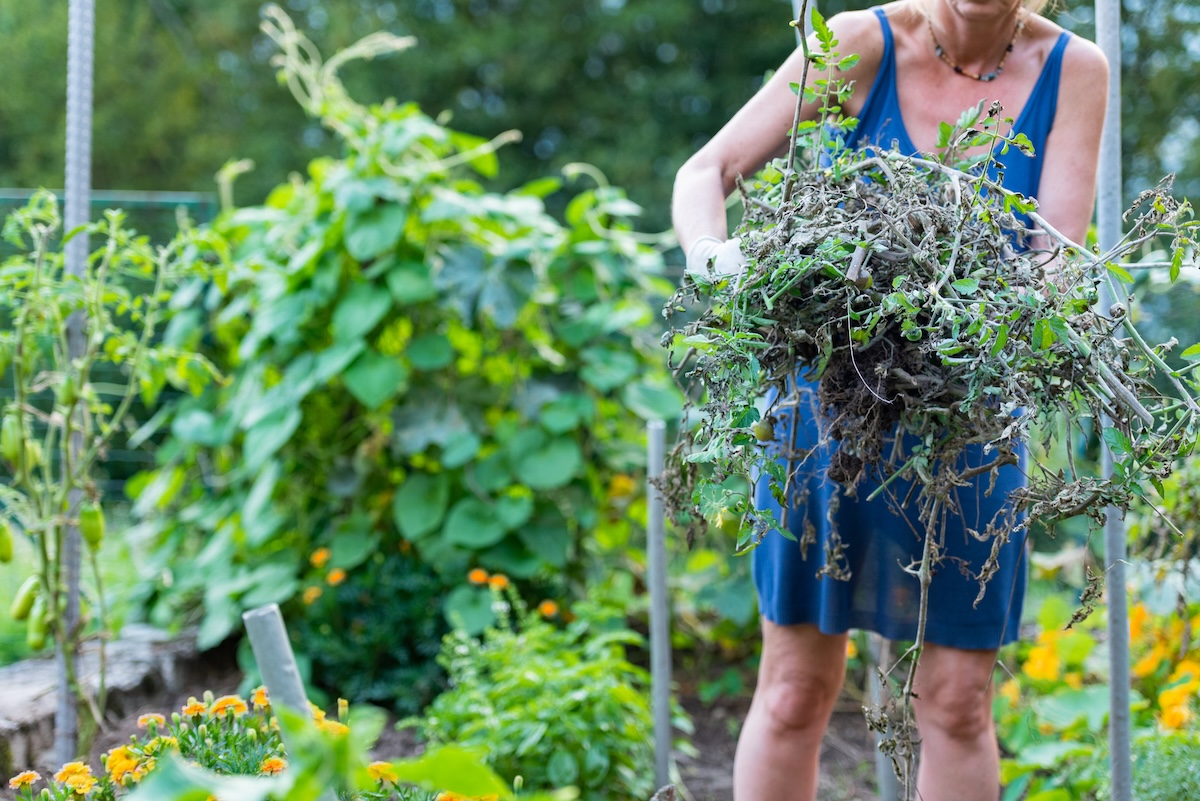
Thin vegetable seedlings.
Thinning seedlings results in healthier plant starts. It’s especially important after seeds germinate indoors in small pots and for any root crop directly sowed in the garden. If crowded, the small plants compete for both the resources they need and the space to grow roots, their main job early in life. As new seedlings emerge in pots or outdoors, I select those that look the strongest or are spread apart as recommended by the seedling packet. And as I learned, even when space is limited in our raised bed design, I have to thin seedlings, opting for fewer but healthier crops.
Next year, I will remember to thin my vegetable seedlings and the following tips:
- Use seed tape or a DIY spacing method when directly sowing tiny seeds like carrots and lettuces, which will spread the seeds out and lessen the need for thinning later.
- Thin once you can tell which plant appears healthiest; don’t go by height as much as clues like emergence of true leaves.
- When thinning seedlings in indoor starter pots, I cut the unwanted seedlings just above the soil with small (manicure) scissors instead of pulling them up to avoid disturbing the tiny roots of the remaining plant.
- In beds, use small pruning shears to cut seedlings if they are close to another, or pull up the entire seedling of root crops like carrots. I hold one hand on the soil around the seedling to lessen soil disturbance while grasping the unwanted seedling at the base.
- To feel less sorry about “wasting” plants, enjoy eating the shoots. Cut-and-come-again lettuce seedlings are useful as microgreens to flavor your lunch salad. You also can compost healthy seedlings.
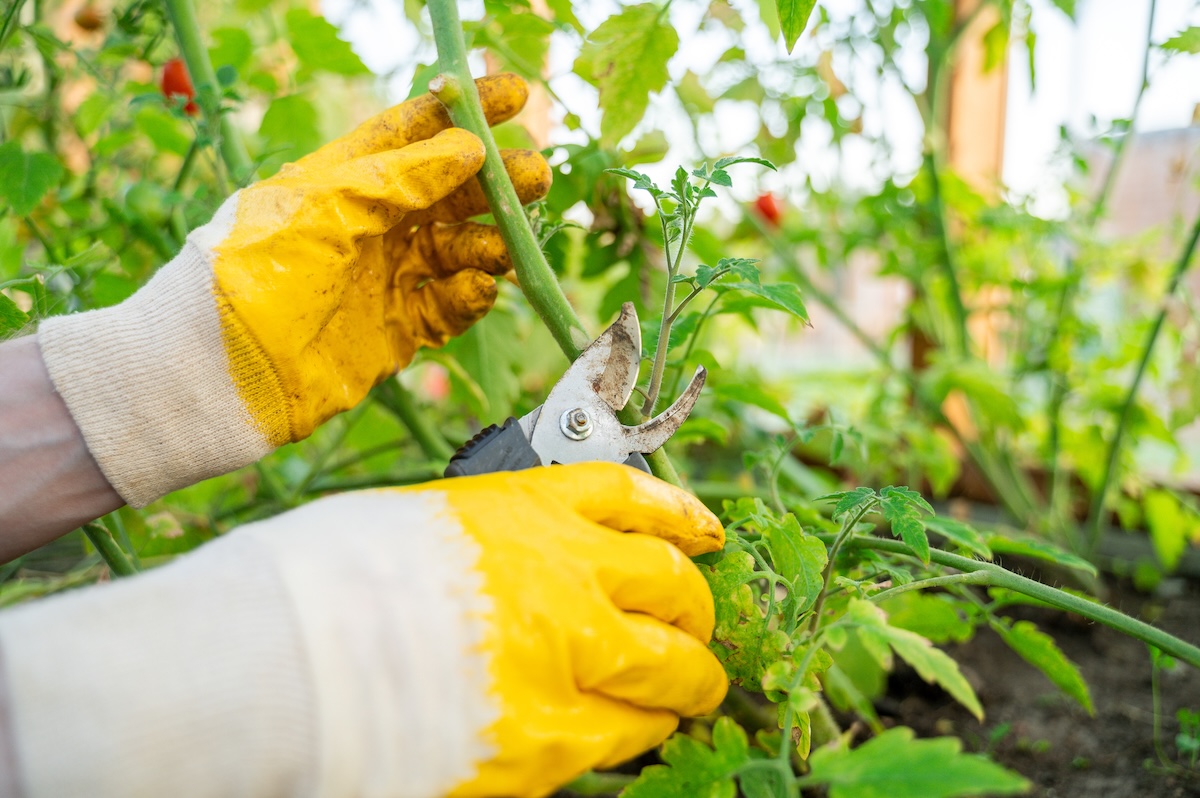
Prune tomatoes, especially suckers.
To spread the harvest out, I’ve always grown indeterminate tomatoes. These plants continue growing (hence the term indeterminate) all season, and this year, I saw their ability to sprawl in full force. Determinate tomatoes are more bush-like and grow to a set size, usually 4 to 5 feet high. However, their harvest period is brief (if not bountiful) and I prefer fresh tomatoes for as long as possible.
Those large indeterminate tomatoes also produce suckers, which grow within the leaf axils from the main stem. Suckers only produce leaves, not fruit, so removing them helps send more energy to flowering and fruiting instead of wasting it on those barren branches. I didn’t catch young suckers as they formed and it became more difficult to see them. As several suckers grow, they can make a tomato plant’s canopy too dense, which can block sunlight to fruits, airflow to leaves, and your eyes from spotting problems like hornworms.
Follow these tips for keeping tomato growth under control.
- Use cages or trellises for all tomato plants (even determinate) to support them.
- If you have never pruned suckers and need help identifying them, this article from the University of Wisconsin-Madison offers tips and a helpful illustration.
- Although I missed many of the suckers, it’s not essential to pinch off every sucker. Don’t pinch off so many suckers that the canopy is too open.
- Try to make a clean break when pinching suckers, not a rough wound.
- I failed to trim off branches that touch the ground., which increased the chance of diseases.
- If you have limited space, grow only a determinate tomato variety for canning or drying fruit; some gardeners grow one determinant and one indeterminate for both preserving and enjoying season-long harvests.

Keep vines and herbs under control.
When growing in limited spaces, it’s essential to grow vertically when you can. I placed pieces of galvanized horse panel near all trailing plants like green beans, cucumbers, and zucchini, but did not keep up with training them. Since some, like the green beans, grew too closely together, many branches wrapped around each other. As with indeterminate tomatoes, supporting these plants’ upright growth can improve airflow, sun exposure, and even improve fruit shape.
Garden herbs also need some pruning to maximize flavor and prevent them from growing into other plants. Basil grows like a small shrub, but mine got too tall and woody because I didn’t harvest the leaves often enough. When herbs like basil or mint are allowed to flower, their next step is to make seeds, which can lead to less, or even bitter, flavor. Follow these tips for controlling vining and shrubbing edibles:
- Consider trellis placement when planning your garden layout. If the trellis filled with beans blocks too much sun, it will affect plants shaded by it.
- DIY a garden trellis from materials like galvanized fencing, chicken wire, or vertical stakes with twine or lattices between them. Bamboo, PVC, metal conduit, and rebar all can work in trellis designs.
- Try to visit the garden in the early morning at least once a week to harvest herbs and check for flower formation.
- I place harvested basil stems in a vase with clean water, stripping lower leaves so they rest above the water, until I’m ready to use them or make pesto.
- Some trailing vegetable plants produce large, heavy fruit that a trellis won’t support, so you’ll need to give them plenty of ground space instead.
- Keep up with trailing plant growth by checking the crops every few days and winding the vines around the support.
The post The Rookie Mistake I Made in My Vegetable Garden This Summer appeared first on Bob Vila.
